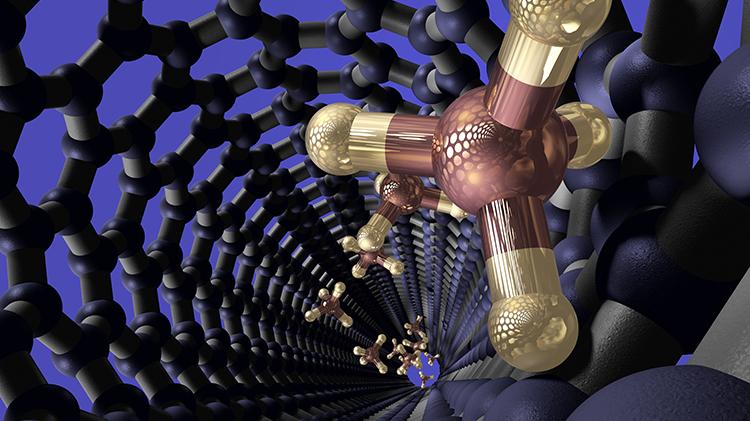
Scientists from the UK’s National Physical Laboratory and Utrecht University have developed a robust protocol for nanoscale chemical imaging using TERS.
Chemical imaging of surfaces is critical to understand the relationships between structural, chemical and functional properties in disciplines ranging across the chemical, material and biological sciences. Conventional methods of chemical analysis are typically restricted by limitations of low sensitivity, microscale spatial resolution, extraneous labelling, high vacuum and destruction of the samples under study.
Scientists from the UK’s National Physical Laboratory (NPL) and Utrecht University have demonstrated the capability of tip-enhanced Raman spectroscopy (TERS), which overcomes the limitations of conventional analytical methods and provides label-free and non-destructive chemical imaging at the nanoscale, in both air and liquid environments. For this technique to be used more widely, several practical challenges have to be overcome and a robust process developed to allow reproducible and conclusive results. This was accomplished over the course of several years and reported in Nature Protocols. Now the scientists can successfully use TERS to characterise single-wall carbon nanotubes, polymer thin-films, self-assembled monolayers of organic molecules, nanoscale structural defects in single-layer graphene, reactions in heterogeneous catalytic systems and small molecules in biological cells.
With a reliable methodology in place, TERS also now has the potential to be used in new application areas, particularly those requiring imaging of surfaces in liquid that has not been possible until recently. As TERS provides fundamental insights into the chemical behaviour of materials, this understanding will enable new products to be developed at a faster rate, in a variety of technical areas.
Dr Naresh Kumar, Research Scientist at NPL and lead author, said: “Over the last two decades, TERS has emerged as a powerful and reliable tool for surface chemical characterisation at the nanoscale, combining the high chemical sensitivity of surface-enhanced Raman spectroscopy (SERS) and nanoscale spatial resolution of scanning probe microscopy (SPM). The publication of this protocol will enable the further acceleration of TERS research around the world, and help researchers to obtain robust analytical data on a wide variety of functional materials.”
Professor Bert Weckhuysen, Professor of Inorganic Chemistry and Catalysis at Utrecht University said, “Measuring catalytic events at the nanometre scale is very challenging. This is necessary to develop new or much improved catalytic materials to accelerate chemical processes, thereby fostering the transition towards a more sustainable society. TERS is one of the promising techniques and the reported measurement protocols in this article will help scientists to uncover the intricacies of catalytic processes.”
